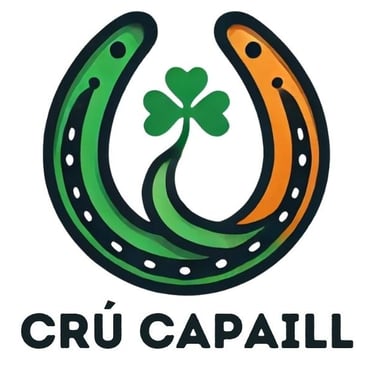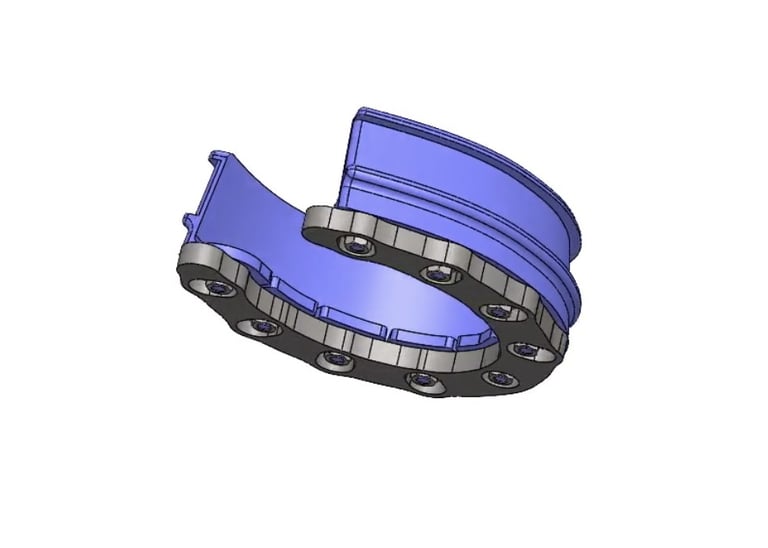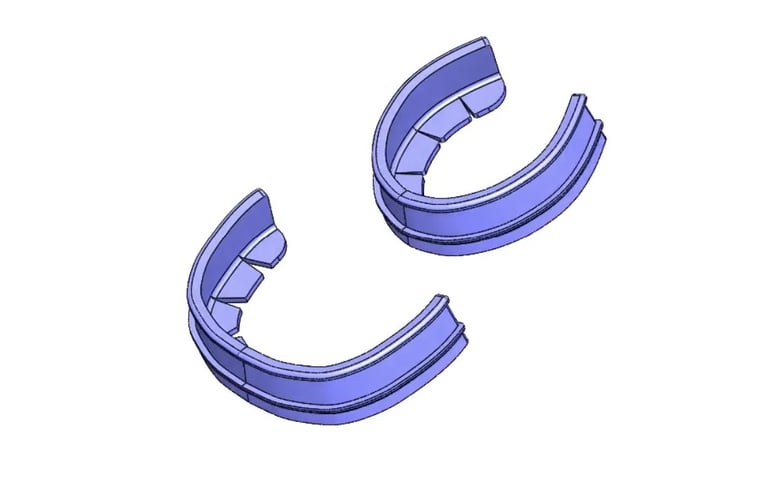
Cru Capaill - Startup for Non Mental Removable Horseshoes
CruCapaill - Startup
CrúCapaill is a startup developing removable, non metal horseshoes that protect hooves during intense activity while allowing horses to go barefoot in low impact environments—combining performance, comfort, and hoof health. This was a one semester group project of four product design students. :
Over 50% of insured horses die due to leg and hoof problems.
A barefoot horse is capable of performing all the tasks that could be expected of a horse, without requiring any kind of protection of the hoof (Dr. Strasser, 2020). For about 200 years, the ill effects of shoeing have been increasingly documented. Like Bracy Clark, who was a scientist at the London Veterinary College around 1800, and that found out that every shoe, no matter how correctly applied, inevitably forces the hoof to contract from year to year.
Our company’s product proposes a dual-function horseshoe that provides robust support during intense activities but also allows for easy removal when going ‘barefoot’ and when the horse does not need the additional support. This design aims to reduce structural hoof damage while allowing horses to maintain good hoof health through the natural interaction of hoof to ground.
At CruCapaill, we looked at how horseshoes should work, look and feel for both the horses and the customers. We understood the needs of the customers. They didn’t need horseshoes on all the time, they only needed them for intense activities. To achieve and implement this bold statement, many different measures were taken into consideration when coming up with the design of the product. When addressing these issues, market research was conducted to see what the standard is, what works and what doesn’t.
The goal was for it to be simple yet highly effective as the usability factor of horseshoes has been previously completely neglected. The process begins with wrapping the upper piece of the horseshoe, which is constructed of a flexible thermoplastic polyurethane (TPU), around the horse's hoof. This part conforms to the specific hoof size due to its design, which features flexible "teeth" for a snug and secure fit. A strap (made from high-strength nylon webbing) is then utilized to tighten this upper piece around the hoof, avoiding the need for nails while retaining the hoof's natural structure. Once the upper component is in place, screw the horseshoe base (made from steel) into the first half of the design. The solid connection between the base and upper part ensures strong support for high-pressure exercises. The underside of the base features a rubberized tread for added traction










Problem Context
For centuries, horses have been domesticated for labor, and although going barefoot is ideal, the demands of their work often lead to poor hoof conformation. This creates a paradox: while barefoot is naturally best, metal horseshoes have become a necessity to provide the support needed for healthy hoof-ground interaction (T.E.D, 2020). Many domestic horses suffer from leg issues such as lameness and navicular disease (M. Aleman, 2008), and shoeing can help improve their AAEP lameness scores (Panos, 2022). However, over time, metal horseshoes can weaken the hoof’s internal structures that would naturally bear weight (Harvey, 2020). According to AHC equine industry statistics (2017), 87% of horses are used in demanding activities like show jumping, cross country, and racing, where horseshoes are often essential. Yet, the use of traditional shoes presents complications, such as nail holes that weaken the hoof wall and remove essential structural material (Themes, 2016).
Current Alternatives
The Henry Burden horseshoe-making machine, patented in 1843, marked the beginning of mass-produced horseshoes, yet their basic design has remained largely unchanged since then (Brainbridge, 2021). Despite significant advancements in our understanding of equine anatomy, horseshoes have not evolved to reflect modern knowledge about hoof health and biomechanics. Composite shoes offer increased flexibility, but they are more expensive than traditional metal options (Tearney, 2016). However, none of these alternatives support the hoof’s natural function as well as being barefoot. Shoeing can drastically alter a horse's movement and increase the risk of injury (Parkes, 2015). Therefore, the longer shoes are worn, the more likely horses are to experience injury..
Feasability of Buisness
Our long-term financial viability will be based in Ireland's high-performance equestrian sector, which includes activities such as racing, show jumping, and eventing. Horse racing alone contributes €1.84 billion to the Irish economy each year, with over 8,000 registered racehorses (Horse Racing Ireland, 2023). The average annual maintenance expense for a competitive racehorse is €25,000, with a considerable chunk going toward health and performance solutions. Show jumping and eventing, which involve over 25,000 registered horses in Ireland, have annual care costs that exceed €15,000 per horse, indicating a willingness among owners to invest in goods that improve performance and prevent long-term dangers (Spoga Horse, 2023). There is a further economic burden faced by horse owners that highlight the value of our product that would reduce these expenses as seen below;
Traditional farrier services, which are required every six to eight weeks, range in price from €70 to €120 every visit for a full set of shoes, totalling €560-€960 per horse per year. Corrective shoeing for high-performance horses costs €150-€250 per visit, greatly increasing annual expenses. (The Pricer, 2023). Hoof-related veterinary treatments, such as prevention of laminitis or infections, add costs of €100–€400 per treatment, with ongoing preventative care potentially exceeding €1,000 annually. (The Horse, 2023)
The leisure and therapeutic equestrian industries also provide significant prospects for expansion. With over 110,000 horse owners and riders in Ireland, leisure riders typically spend between €1,500 and €3,000 per year on horse maintenance. Furthermore, Ireland has over 150 equine-assisted therapy clinics, which prioritize horse health and are early adopters of goods that improve the usability and well-being of their therapy horses (ICFTA, 2022). Therefore our product can offer a practical and cost-effective alternative, potentially saving owners €200–€400 annually per horse by reducing routine farrier visits and hoof-related medical interventions.
Thank you
You can also watch the video here:

